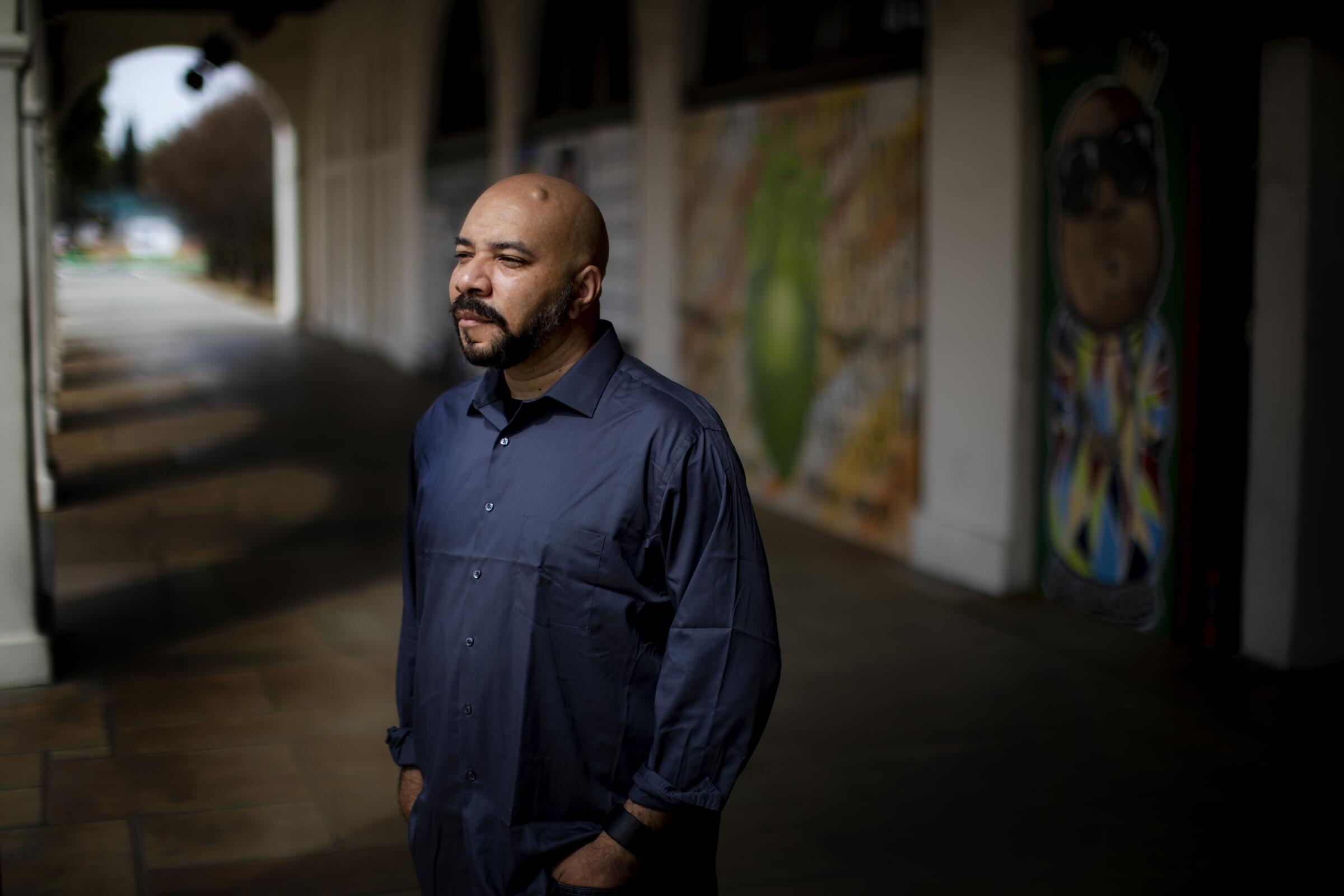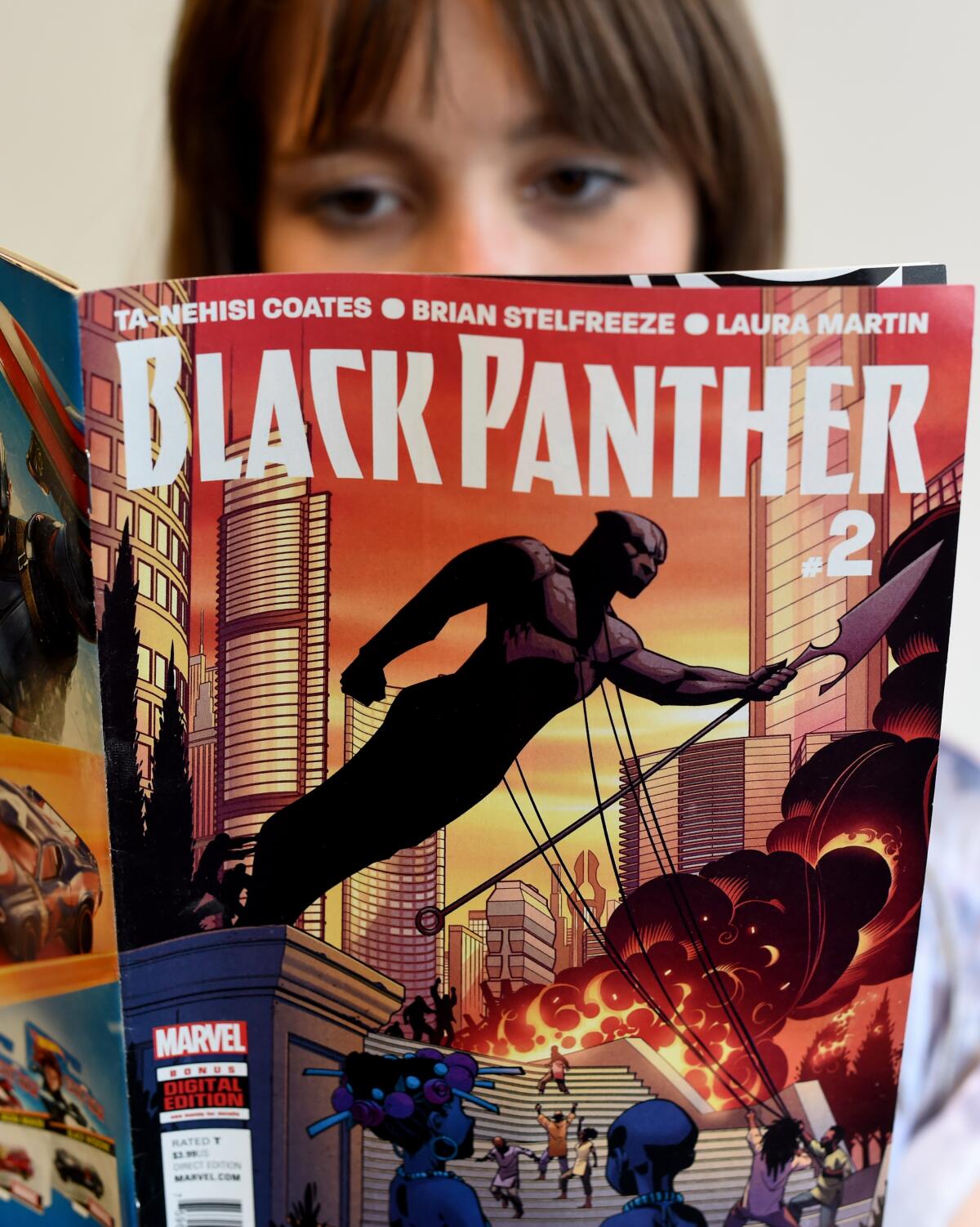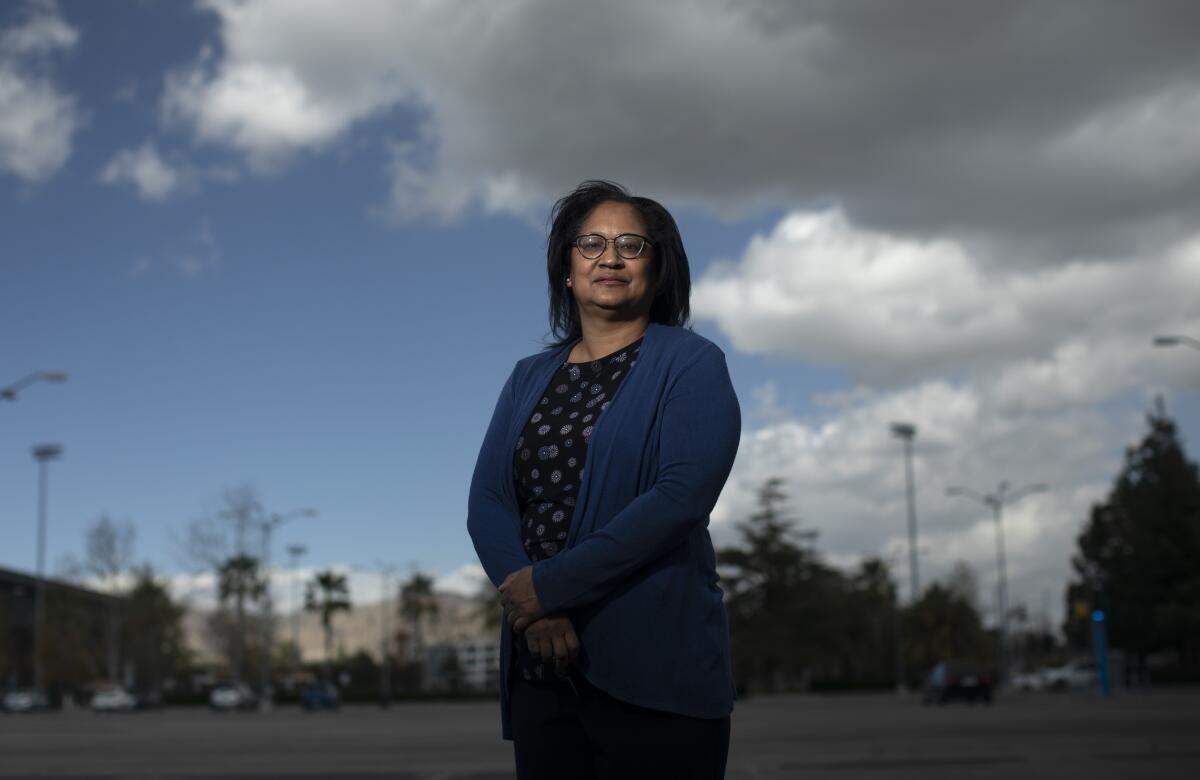Sign up for our Book Club newsletter
Get the latest news, events and more from the Los Angeles Times Book Club, and help us get L.A. reading and talking.
You may occasionally receive promotional content from the Los Angeles Times.

Manuel and Geiszel Godoy are military veterans, and they believe deeply in social justice. But above all, they are entrepreneurs who saw an underdeveloped sector in their industry and dove in.
“We have to show that we can pull a Tyler Perry as a community,” Manuel Godoy, president of Black Sands Entertainment, says in a recent video interview. “The idea is that the bigger the company gets, the better the IP does, the more everybody wins, and we can fund our projects ourselves because we have the experience, the expertise to do it.”
The Godoys’ niche is a growing one: indie comics by Black artists, written for Black families about Black people, with a focus on tales of Africa before slavery. Among their projects are an upcoming animated series and the Black Sands Publishing app, which will offer free access to 26 original comic books when it launches May 1, Free Comic Book Day. ‘
Black superheroes are popular onscreen thanks to the work of Black creators of comic book characters and stories that anticipated this racial reckoning moment.
“If we get this done,” Godoy says, “we’ve proven that you no longer have to walk through the gate they built in order to get to the main stage.”
Black Sands isn’t the first through the gate. It joins a growing hive of Black creators who’ve carved space in a format that for decades was steeped in racism and exclusion.
Booming genres like Afrofuturism (which meshes African culture with science fiction) reflect worlds envisioned by Black activists: Worlds in which existing power structures are dismantled and Black people thrive.
But there are other genres on the rise — from romance and horror to Black superhero reboots and musings on workaday life. In the dark-fantasy adventure “Submerged” by Vita Ayala, a girl embarks on a quest to find her estranged brother after he gets lost in a New York City subway. Ebony Flowers’ “Hot Comb” explores Black women’s relationships with their hair. In Micheline Hess’ horror comic “Diary of a Mad, Black Werewolf,” a clan of Black female werewolves prey on racist cops and “Karens.”
Just as Black Lives Matter builds on movements of the past, the rise of Black comics is more of a revival.
“One thing that gets lost when talking about the great Black orators, thinkers and historical figures of our time are the Black comic creators,” says Sheena Howard, professor of communication at Rider University. “Challenging racial stereotypes in comics is a big part of what Black creators have done, alongside directly addressing injustice.”
Black Panther, considered by many the first Black superhero in the American comic book mainstream, is a prime example. His emergence in 1966 marked a historic moment for representation in comics. As his storyline evolved, T’Challa, king of the futuristic Wakanda, addressed colonialism, racism and segregation.
I believe it was the summer of 2013 that I went to check out a movie with my friend and colleague Nate Moore (executive producer of “Black Panther”).
More than 50 years later, Chadwick Boseman, the late actor who brought the Black Panther to cinematic life in 2018, helped implant the African kingdom in the American mainstream.
But the road to Wakanda was long and painful. For much of the 20th century, racist images of Black characters filled the pages of the mainstream press. Many cartoons were caricatures derived from blackface minstrelsy, like Ken Kling’s “Joe & Asbestos.” Even children’s books by admired authors, such as Dr. Seuss’ “If I Ran the Zoo,” depicted Black people as monkeys.
“We often see ourselves through the eyes of others,” says Howard, editor-author of “Why Wakanda Matters: What Black Panther Reveals About Psychology, Identity, and Communication.”
When those images are internalized, she adds, they can damage identity and self-esteem. “We often get our perceptions of others from the media ecosystem.”

Yet even when black- and yellowface were prevalent, there were alternatives. Oliver Harrington, a Black political cartoonist, followed the Harlem-born Bootsie in his comic strip “Dark Laughter.” Jackie Ormes, regarded as the first Black woman cartoonist, fashioned confident and smart female characters in her “Torchy Brown” series.
“A lot of the Black cartoonists early on were trying to normalize Black life — showing the good and the bad,” says author and illustrator John Jennings. That’s what made Ormes’ and Harrington’s comics powerful; they were outliers but they didn’t trade on exoticism. “Their stuff was slice-of-life work. ... People tend to forget that having joy in the face of oppression is a radical act.”
Trailblazing Black female cartoonist Jackie Ormes is honored by New Yorker magazine cartoonist Liz Montague on Google’s landing page today.
In 1947 came “All-Negro Comics,” a single-issue, small-press comic book anthology created solely by Black artists and founded by reporter Orrin C. Evans.
The character Lion Man — whom many deem a prototype of Black Panther — was a college-educated, Black superhero protecting the world’s largest uranium deposit. Evans wrote in the introduction that he hoped Lion Man would give Black Americans “a finer appreciation of their African heritage.”
A second issue was planned, but vendors would not sell Evans the paper to print it.
“The fact that [Evans] went through the trouble to make that book was an act of resistance,” says Jennings, UC Riverside media and cultural studies professor and founder-curator of Megascope, a publisher of graphic novels by and about people of color. (Among Megascope’s upcoming works are “Across the Tracks,” a young readers’ comic about the Tulsa Race Massacre, out May 4, and “Hardears,” a sci-fi fantasy adventure and political satire inspired by Barbados’ Crop Over festival, out May 11.)

Nearly two decades later, Black Panther emerged against the backdrop of the civil rights movement, paving the way for future Black superheroes like Blade, Luke Cage and Storm.
Not all Black comic heroes wore capes. “Martin Luther King and the Montgomery Story,” published in 1957, offered a primer on nonviolence. The mainstream comic industry ignored it, but it was widely circulated among schools, churches and civil rights groups.
In this century, there was the “March” trilogy, an award-winning graphic novel about the movement by Andrew Aydin and John Lewis, the late congressman and civil rights icon.
Similar stories, like Kyle Baker’s series “Nat Turner,” about the slave rebellion, and David F. Walker’s “The Life of Frederick Douglass” offered lessons about history, revolution and resistance. Aaron McGruder’s syndicated comic strip “The Boondocks” (1996 to 2006) commented on political and popular events through the eyes of an African American boy.
Now that history is being made again — on the streets and on the page — old characters are being reimagined for modern times and defunct imprints are being revived.
DC Comics recently announced it will reimagine the 1993 origin story of Static, the electricity-wielding Black teen (a.k.a. Virgil Hawkins), who got his superpowers after a clash between gangs and police — an event known as the Big Bang. This time, Hawkins’ superpowers originate from a police brutality protest.
The timely retelling of Static and other meta-humans, known as the Bang Babies, is part of DC’s revival of Milestone Comics, a pioneering imprint founded by four Black creators in 1993 that centered superheroes of color. The original imprint essentially shut down after four years in part because of the perception that it was only for Black readers. Yet Static was so popular he not only joined the DC Comics universe, but got his own WB animated series, “Static Shock.”
“When you’re stuck in that dilemma of like, ‘Milestone Comics is only for Black people,’ then your only market is 14% of the population,” Howard says, “and that becomes very difficult.”
Milestone’s demise was a huge loss for comics writer Kwanza Osajyefo, who felt it was one of few comic publishers that accurately portrayed “Blackness and Black culture.” DC plans to release new titles with Milestone characters this summer.
When Osajyefo took a job in 2007 with DC Comics, he helped launch the webcomics imprint Zuda, prioritizing content from creators of color. It closed three years later, but it made room for an idea that began percolating in his head more than a decade ago: What if only Black people had superpowers?
“I grew up reading comics like X-Men, where these white characters are supposed to be outsiders,” he says. “People call them analogies for minorities like Black people, and I’m like, ‘No. That’s not accurate.’” When Cyclops and Jean Gray take off their costumes at the end of the day, they’re white. Nobody’s pulling Wolverine over because he’s driving a nice car.”
In 2016, Osajyefo and others launched a successful Kickstarter campaign for “Black” — about a teenager who discovers he has superpowers after surviving a cop’s bullet. After “Black” was published, movie offers flooded in. Last year, Warner Bros. acquired the feature adaptation rights.
Studio interest was in no small part due to the success of director Ryan Coogler’s take on “Black Panther,” along with the animated film “Spiderman: Into the Spiderverse.” They debunked the idea that movies starring Black-led superhero characters aren’t profitable, says Frances Gateward, professor of media theory and criticism at Cal State Northridge and co-editor of “The Blacker the Ink: Constructions of Black Identity in Comics and Sequential Art.”
The fictional African land of Wakanda, which outsiders wrongly assume to be a Third World country, is the most technologically advanced nation on Earth in the Marvel comic book universe.
“Disney/Marvel so grossly underestimated the film’s potential that fans who wanted to purchase ‘Black Panther’ merchandise couldn’t find any,” she says. “So, as many active fandoms do, they made their own. We began to see more titles featuring Black characters, in every genre from romance to horror to superheroes.”
Perhaps more than anything, stories like “Black Panther” and publishers like Black Sands Entertainment offer examples of “heroism,” Gateward says, “both in ordinary everyday living and fantastical superpowered beings — but maybe most importantly, by showing Black communities surviving and thriving.”
Sign up for our Book Club newsletter
Get the latest news, events and more from the Los Angeles Times Book Club, and help us get L.A. reading and talking.
You may occasionally receive promotional content from the Los Angeles Times.